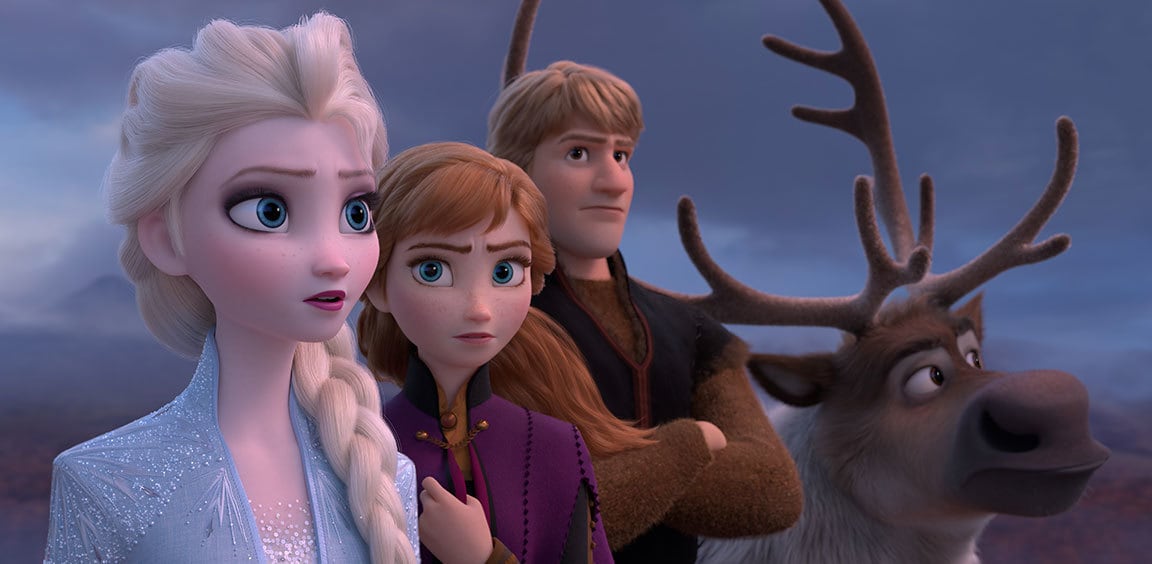
TV Editor Cat Osborne finds solace in the warm colours of Disney’s Frozen II, but struggles with a convoluted narrative
Whilst Pixar loves to abuse the format, Disney films rarely have sequels, especially for the princesses. There is the straight-to-video sequel of The Little Mermaid where we have to see Ariel become a boring mother, the Mulan and Cinderella sequels where nothing really changes and Pocahontas 2 in which way too much changes. For Disney to make a blockbuster sequel for Frozen may seem like an obvious choice in our hyper-capitalist world, but it is a decision that must be recognised as ambitious.
For years after its release, Frozen was splattered across our vision from endless YouTube covers of ‘Let it Go’ to Olaf’s face plastered on every marketable good. Whilst Frozen II is most likely a cash-grab, it can’t be denied that the scriptwriters attempted to take the franchise to new realms through The Enchanted Forest. This new setting paired with the autumnal theme provides a rich new palette of crimsons and purples.
“[Some] choices are seemingly purely aesthetic and plot-driven
Although it may be beautiful, the lore of the four elemental spirits in The Enchanted Forest is anything but understandable. Little explanation is given to why there are sinister earth giants, but water is a horse, whilst fire manifests as a lizard that belongs in a Happy Meal, and wind is literally just a gust of wind. These choices are seemingly purely aesthetic and plot-driven, so may confuse the intended child audience.

Another surreal moment is Kristoff’s (Jonathan Groff) song ‘Lost in the Woods’. Whilst Groff is a brilliant singer, the Bryan-Adams-style 80’s power ballad mixed with reindeer emulating the imagery of ‘Bohemian Rhapsody’, was not the path to take. Although parents may understand the references, this fever dream feels out-of-place.
“Disney can’t seem to help but evoke the audience’s nostalgia
However, amongst this somewhat confusing narrative and emotional themes, Olaf (Josh Gad) provides perfect comic relief for both the children and their parents in the audience. The most notable of these being his re-enactment of the entire plot of the first film, which comes across as a self-aware parody from Disney. Moreover, his sub-plot about dealing with the process of ageing can provide some solace for the viewers who are now six years older than when they first saw the singing snowman.
Disney can’t seem to help but evoke the audience’s nostalgia. This is captured in the introductory number ‘Some Things Never Change’ which implements the idea that the film wants to be similar, yet different. It is understandable that Disney would use motifs from Frozen and references to warm hugs or building snowmen as audiences love being reminded of the original film. However, there is a fault in how this film repeats the concept of Arendelle under threat and the sisters needing to work through their issues of misunderstanding.

“The soundtrack feels more as if chart music was inserted amongst the narrative of a children’s film
To find the fatal flaw of Frozen II, we need look no further than the songs. Plenty of people love to label the original film’s songs as overrated but Robert Lopez and Kristen Anderson-Lopez hit the nail on the head with the selection of tracks, albeit lacking a villain song. Although the same songwriters wrote the music for the sequel, the success of ‘Let it Go’ haunts the soundtrack. There are not one, not two, but three different pop power-ballads with generically motivational lyrics about freedom and optimism. The best of these is ‘Into the Unknown’ which incorporates the leitmotif of the woman’s voice that Elsa continues hearing. However, its adaptability to popular music is exemplified by Panic! At the Disco’s cover which is blasted amidst the credits. The brilliance of Classic Era and Disney Renaissance songs lies in their specificness to the plot, but this soundtrack feels more as if chart music was inserted amongst the narrative of a children’s film.
Despite some faults, I must commend Disney for subtly tackling political themes. Although we focus on the personal struggles of our protagonists, the concept of revisionist history hangs over the film. Elsa is determined to find the truth of the past and, although it may not be idyllic, they acknowledge this and move forward. I doubt it is a coincidence that the Northuldra tribe bears a resemblance to Native American people. The power of cinema as a teaching tool is a debatable concept but children can definitely learn an important message about recognising the faults of their ancestors.
Disney succeeded in the ending of Frozen II, which feels correct and we recognise that the characters have finally found inner peace. Furthermore, there are meta-references that no threat will come to the sisters or Arendelle ever again. As Anna sings about in the climax, one must do ‘The Next Right Thing’ and it seems that even Disney knows that this will be done through leaving the series alone.
Verdict:
While the sequel is by no means frozen in the past, the film can’t help but rely on the marketability of the franchise from confusing aesthetic-driven choices to the out-of-place pop songs. Frozen II provides a poignant ending but Disney now need to ‘Let it Go’.
6/10
Frozen II is in cinemas now.
Comments